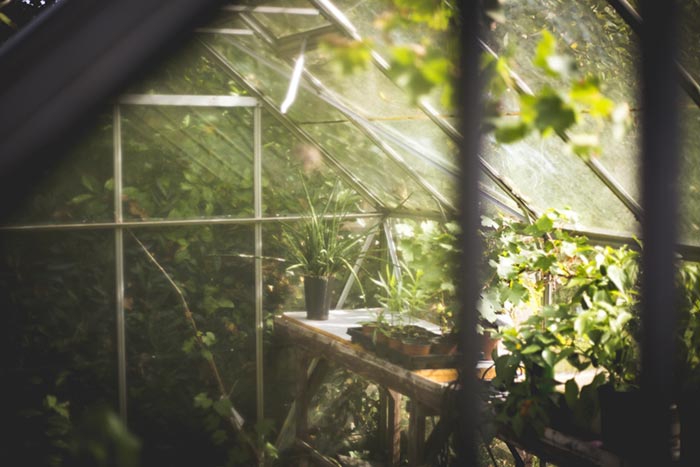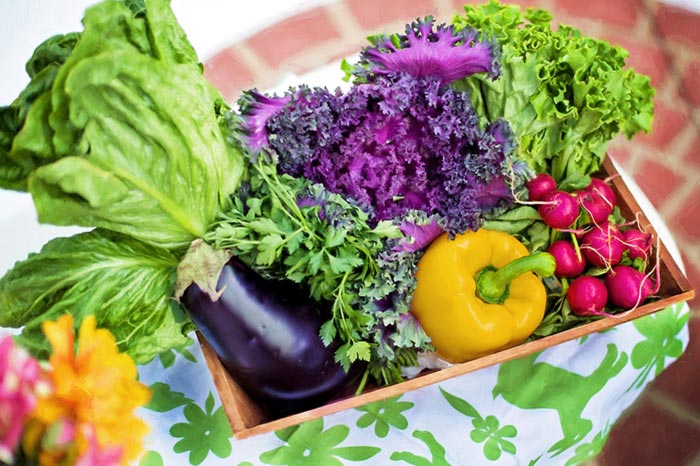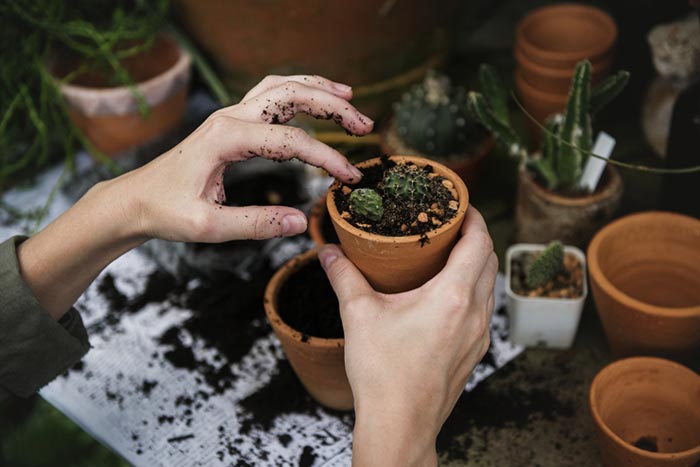Table of Contents
Just ask anyone who gardens and you’ll hear the same story from most: digging, weeding, and planting is highly satisfying. Far more than just a hobby, gardening has also been proven to be good for your health. While it’s easy to think of gardening as an activity for those with huge backyards, there’s no reason why people who live in apartments shouldn’t get out their gloves and a bag of potting soil and get to work.
You have 2 options: live in a place with space for a garden, or just start your own apartment garden!
Here’s how.
Getting Started with a Community Garden

So you’ve found a really good apartment … now how about kicking it up a notch by installing a community garden for your apartment property? The first step in the process is to ask around and gauge interest from your neighbors. If a large enough portion of the community would like to participate, you’ll be able to move forward with a meeting about factors such as the location of the garden, the amount of garden space needed, and the kinds of plants that will be included. This is also the time to discuss how the equipment, plants, and other items for the garden will be funded — whether through a fee to all residents or a donation by those who wish to participate.
When it comes to location and plants, keep in mind that a community garden needs lots of space and will do best in a location that gets hours of direct sunlight. It’s also helpful to find out what kind of soil you have in your area, as most plants thrive in loamy soil. If the area you’ve plotted out for your apartment community garden doesn’t have great soil, you can mix in a layer of compost to supplement it.
Community Garden Plants, Plots, and Policies
Once the community garden location and funding is all set up, it’s time to figure out what to grow there. This decision should be guided by the purpose of the garden and its plants (flowering plants or edible? A mix of both?) as well as what grows well in your climate. You’re more likely to get salad greens than citrus trees in a place that has snow in the winter or vice versa in a warmer climate with full sun year-round. Plants such as rose bushes can add a splash of color, while blueberry bushes will offer fruit that can be enjoyed by all.

One excellent way to sort out what will be grown in a community garden is to divide it into individual plots and let each participant take over and maintain one. Someone may want to be a vegetable gardener while someone else might want to tend beautiful flowers. This way, each participating resident can maintain and harvest from their own individual plot. Make sure to be clear about how the garden will be planted and maintained from the beginning so there is no conflict as time goes on
Consider Composting
As part of your community garden, consider starting a compost pile for apartment residents to take part in. This offers a wonderful opportunity for neighbors to recycle food waste in a way that will lead to a more rich and thriving garden. In order to be successful at composting, clearly post rules and allowed/forbidden items for those who may not be as familiar with how the process works.
What About an Individual Apartment Garden?
If there’s not enough interest (or enough space) to start a community garden, no worries! You can always start your own garden in a window or on a balcony. Even if your balcony space is small, you can get window boxes, potted plants, hanging baskets or vertical planters that allow you to make the most of your space and enjoy multiple plants. Easy to grow herbs like rosemary, basil, thyme, and lavender do well in balcony gardens (and can add a delicious touch to homemade dishes). For a shady balcony, impatiens will thrive nicely, while beautiful bougainvillea enjoys the sun.

Apartment dwellers without an outdoor space can still exercise their green thumbs by taking advantage of natural light from windows. A kitchen window sill makes a nice place for a small garden, and for a particularly stunning display, look into installing shelves into a window for an indoor garden that doubles as a privacy screen.
Before making any permanent changes to your apartment, check with your landlord in advance to make sure installing shelves in the window is ok. For your window garden, plants like ivy, ferns, and succulents will look beautiful and do nicely in lower-light conditions indoors. (If you have pets, make sure not to get any plants that will be toxic to them.)
Whether you’re tending to a window garden, pots on the balcony, or digging around in your apartment community garden, having some sort of an apartment garden is a fantastic way to reduce stress and get outdoors (or bring the outdoors inside).

